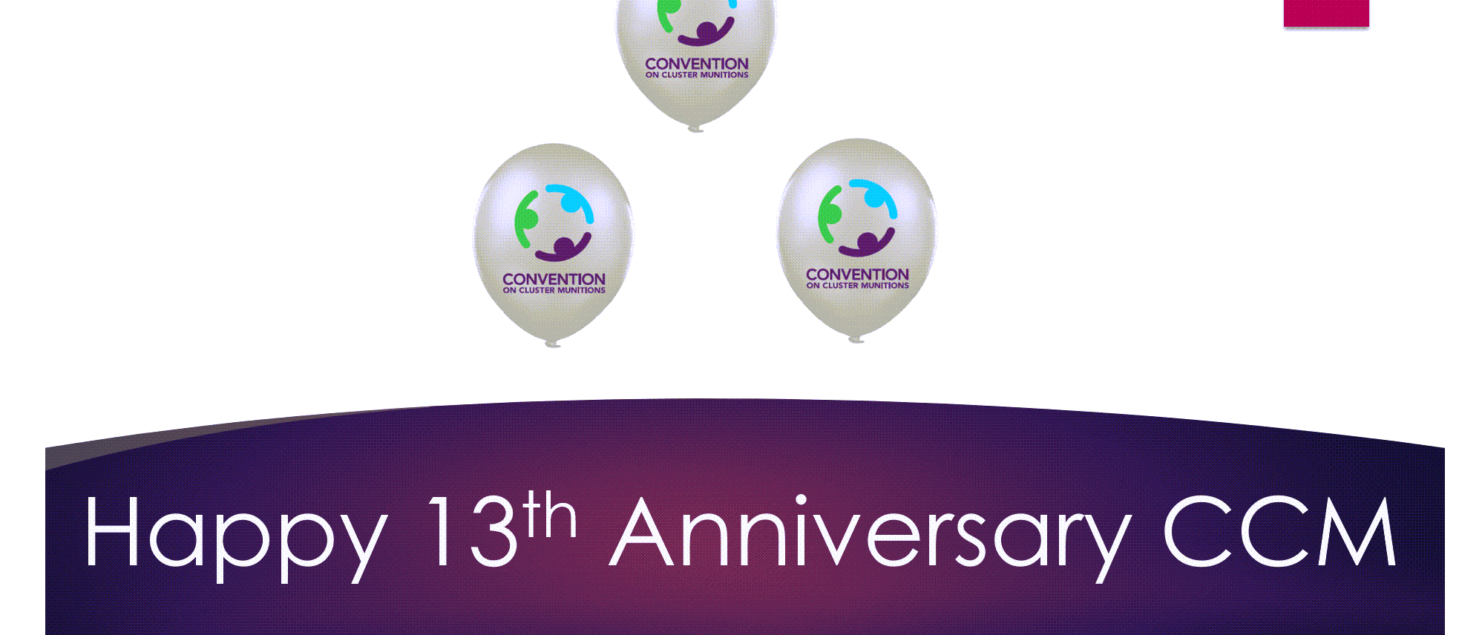Celebrating 13 Years of the Convention on Cluster Munitions Entry into Force
On the 1st of August, we commemorate the 13th anniversary of the entry into force of the Convention on Cluster Munitions (CCM). This international treaty, which prohibits the use, production, stockpiling, and transfer of cluster munitions, has made significant strides to attain a world free of casualties, suffering and socio-economic impacts caused by cluster munitions.
Since its inception, the CCM has gathered widespread support from the international community. Currently, the Convention boasts 111 States Parties and 12 Signatories, demonstrating the global commitment to address the humanitarian and security concerns posed by cluster munitions.
A remarkable aspect of the CCM’s success lies in its inclusive approach. More than 180 states and 80 organizations and institutions have actively participated in CCM meetings, including Review Conferences, Meetings of States Parties, Intersessionals, and Regional Meetings. Moreover, this broad engagement attests the sense of community and strong partnerships forged over time to tackle the challenges posed by cluster munitions. As the Lausanne Declaration rightfully acknowledged, “strong national ownership, enhanced national capacity as well as international cooperation and assistance play an important role in the timely and full implementation of the Convention”.
To guide and reinforce implementation efforts, the CCM States Parties have developed comprehensive 5-Year Action Plans. These strategic frameworks, the Vientiane Action Plan (2010-2015), Dubrovnik Action Plan (2015-2021), and Lausanne Action Plan (2021-2026), provide crucial guidance to States Parties in fulfilling their obligations under the Convention.
The remarkable progress achieved under the CCM is shown in the destruction of cluster munitions worldwide. A staggering 99% of global cluster munitions have been destroyed, amounting to 1.5 million cluster munitions and 178 million submunitions. Out of the 41 States Parties with Article 3 obligations, 37 have complied, leaving only four States Parties yet to fulfill their obligations in this regard.
Furthermore, over 700 square kilometers of land have been declared cluster munition-free and released for productive use. While seven out of 17 States Parties have successfully complied with Article 4, work still remains to be done to ensure that all affected areas are cleared, and communities can rebuild their livelihoods without living in constant fear of cluster munition remnants. Education programmes on the risks posed by cluster munitions have been put in place to help alert communities to the dangers these weapons pose and allow them to reduce their exposure until the contaminated areas can be cleared. The affected communities have played a pivotal role in the crafting and implementation of these programmes.
A hallmark achievement of the CCM is its ground-breaking comprehensive understanding of victim assistance and the term “victim”. The Convention’s provisions establish victim assistance as an obligation of the same legal relevance as the other key treaty obligations. They aim at improving victims’ lives, ensuring their rights as well as enabling them to participate as productive members of their communities. In this regard, the intersectionality between human rights, disability and development domains has been key.
The CCM recognizes the fundamental importance of international cooperation and assistance in achieving its objectives. Mechanisms such as “Country Coalitions” and “Military to Military dialogues” have been established to support States Parties in fulfilling their obligations thus strengthening the norms established by the Convention. Nevertheless, sustained financial support for mine action will be key for affected States Parties to meet their obligations in a timely manner.
National implementation measures play a vital role in confirming domestic action to fulfil and ensure compliance with the Convention’s obligations. Progress has been achieved in this area as well. Currently, 64 States Parties have enacted national legislation to implement the Convention. Of these 64 States Parties, 12 have enacted legislation that outlaws investments in such weapons as well.
Transparency and reporting are essential to the Convention’s success. The initial transparency reporting rate stands at an impressive 92%, demonstrating States Parties’ commitment to transparency, confidence building and accountability. Additionally, the annual reporting rate is at 75%, reflecting the continuous efforts made by States Parties to provide accurate and timely information on their implementation progress.
As we celebrate the 13th anniversary of the CCM, we acknowledge the remarkable achievements made thus far which are not limited to the disarmament humanitarian realm but also contribute to advancing the Sustainable Development Goals as well as the core objectives of Human Security, promoting peace and international security, putting women, girls, boys, and men at the forefront of our efforts.
Developments in the past months have acutely shown the many challenges which lie ahead of us. We will face them together, through the collective determination which led us years ago to address the humanitarian consequences and unacceptable harm to civilians caused by cluster munitions.
